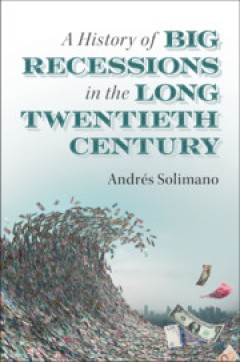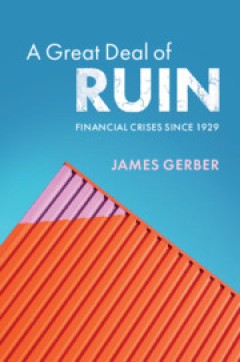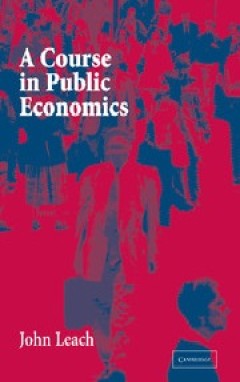Filter by

A History of Big Recessions in the Long Twentieth Century
This book examines the array of financial crises, slumps, depressions and recessions that happened around the globe during the twentieth and early twenty-first centuries. It covers events including World War I, hyperinflation and market crashes in the 1920s, the Great Depression of the 1930s, stagflation of the 1970s, the Latin American debt crises of the 1980s, the post-socialist transitions i…
- Edition
- -
- ISBN/ISSN
- 9781108755276
- Collation
- -
- Series Title
- -
- Call Number
- -

A Great Deal of Ruin Financial Crises since 1929
A Great Deal of Ruin provides an accessible introduction to the enduring problem of financial crises. Illustrated with historical analysis, case studies, and clear economic concepts, this book explains in three parts what financial crises are, how they are caused and what we can learn from them. It begins with a taxonomy of crises and a list of factors that increase the risk for countries exper…
- Edition
- -
- ISBN/ISSN
- 9781108608589
- Collation
- -
- Series Title
- -
- Call Number
- -

A Course in Public Economics
A Course in Public Economics, first published in 2004, explores the central questions of whether or not markets work, and if not, what is to be done about it. The first part of the textbook, designed for upper-level undergraduates and first-year graduate students, begins with an extended discussion of the two theorems of welfare economics. These theorems show that competitive markets can give r…
- Edition
- -
- ISBN/ISSN
- 9780511754180
- Collation
- -
- Series Title
- -
- Call Number
- -

A European Central Bank? Perspectives on Monetary Unification after Ten Year…
This volume, based on a conference held by the Italian Macroeconomic Policy Group and the centre for Economic Policy Research, examines the issues raised by European monetary unification. An introduction describes recent monetary developments and identifies the motivations for creating a European central bank. Theoretical papers analyse the interactions of capital controls, financial intermedia…
- Edition
- -
- ISBN/ISSN
- 9780511628504
- Collation
- -
- Series Title
- -
- Call Number
- -
 Computer Science, Information & General Works
Computer Science, Information & General Works  Philosophy & Psychology
Philosophy & Psychology  Religion
Religion  Social Sciences
Social Sciences  Language
Language  Pure Science
Pure Science  Applied Sciences
Applied Sciences  Art & Recreation
Art & Recreation  Literature
Literature  History & Geography
History & Geography